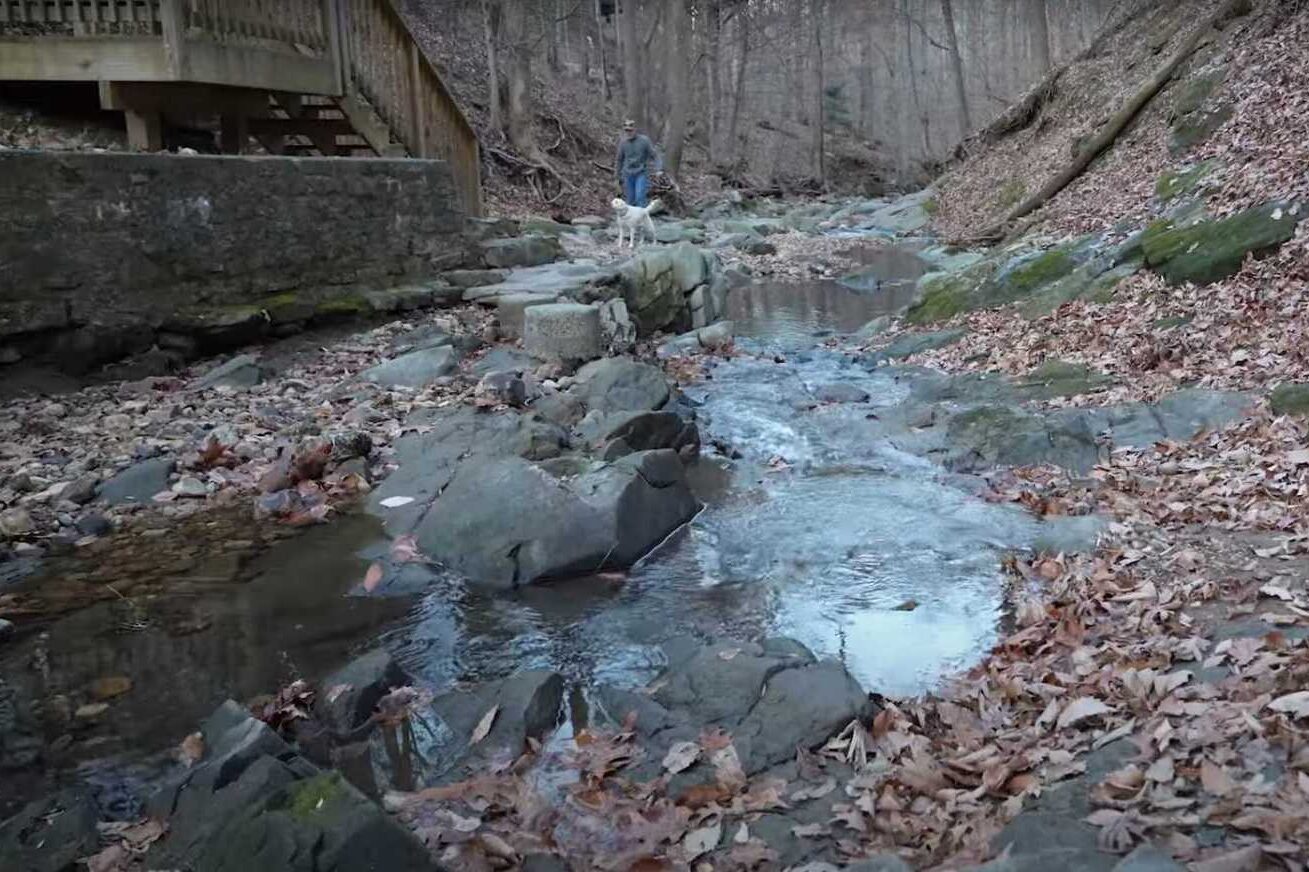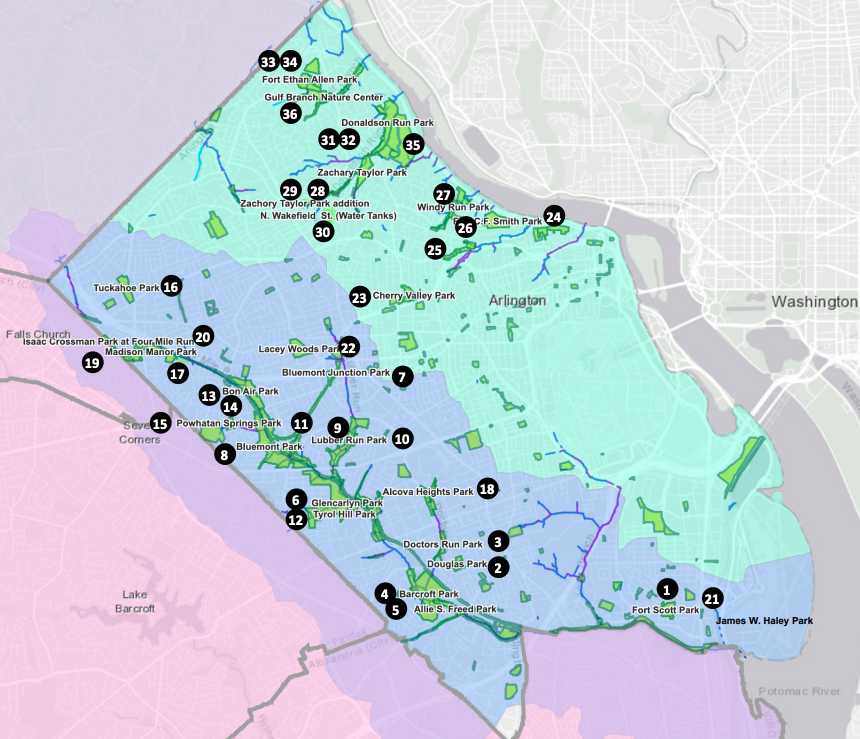
Going for a hike in Arlington? The trail you use might cause harm to the environment.
That’s according to a study on unpaved hiking trails released earlier this month. The Natural Surface Trail Condition Assessment, a first-of-its-kind project for the county, aims to be a comprehensive survey of Arlington’s 20+ miles of trails free from surfacing materials such as pavement or asphalt.
The study, published on Jan. 18, finds that long stretches of local trails need improvement. Some areas cause ecological harm by running through wetlands while others cause soil erosion, are riddled with trip hazards or are difficult to maintain.
“The important bottom line from our trail assessment is that approximately 60% of that trail mileage needs work in order for it to be sustainable and minimize environmental impacts,” Ryan Delaney, project manager for the Natural Surface Trails Project, said in a county video.
The problem, according to an overview of the study, is a lack of planning.
No one ever formally designed Arlington’s network of county-owned trails, which mostly run through forested areas such as Glencarlyn and Gulf Branch parks, and include examples such as the Potomac Heritage National Scenic Trail and Donaldson Run Trail. Instead, the trails formed piecemeal through volunteer projects, county initiatives and the whims of hikers repeatedly walking through certain areas.
“Until this project was initiated, a full database of these trails and their condition did not exist,” the overview says. “Because of this, many of the trails in the system are not sustainable.”
To study local trails, surveyors combined existing maps with real-world observations of nature routes in 29 different parks. They found that many “social” trails created by hikers are especially troublesome, sometimes winding too closely together or running up steep inclines — both of which are bad for the environment.
Delaney says trails can also be unsustainable if they are hard for the parks department to manage or are too difficult or hazardous for residents to use.
The county is trying to fix this by developing a plan for trail management going forward.

As it develops this plan, Arlington’s Dept. of Parks and Recreation is soliciting feedback from respondents via a questionnaire, now open through Wednesday, Feb. 22.
The survey asks respondents to list any particularly troublesome trails, weigh in on “trail experiences” they want to see and provide input on how they use existing routes. People can also let the county know about any trails not included in the trail condition assessment.
The county plans to combine research, community input and design and maintenance guidance to present a revised map of what Arlington’s trails should look like in the future. Another engagement opportunity is slated for this summer before a trail management framework is implemented in the fall, per a county timeline.
Delaney hopes to ensure that all Arlingtonians can enjoy the county’s natural beauty for years to come.
“We want to make sure that our trails are considered safe and inviting by every member of our community,” he said. “Trails are one of the primary ways that we can experience all the benefits of nature, and in Arlington we want that to be available to everybody, regardless of their background.”

